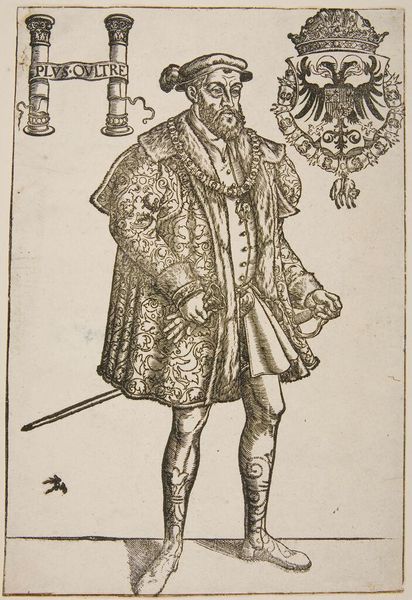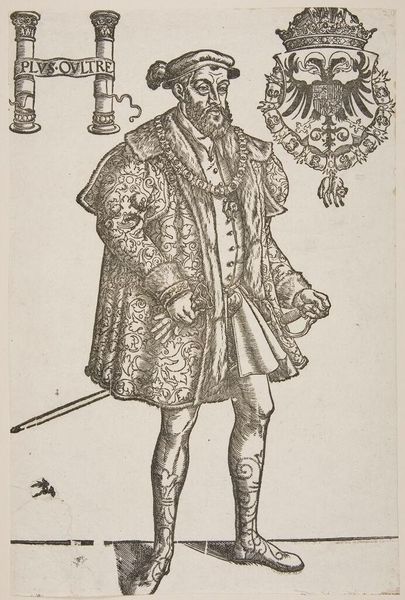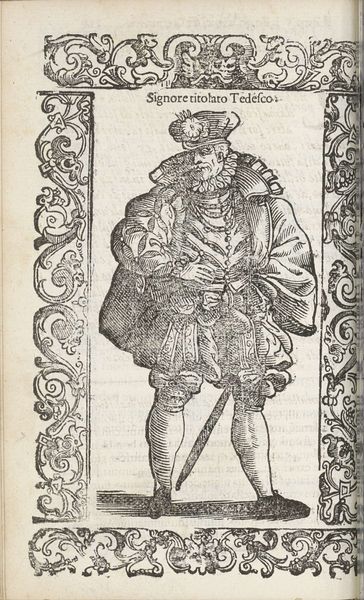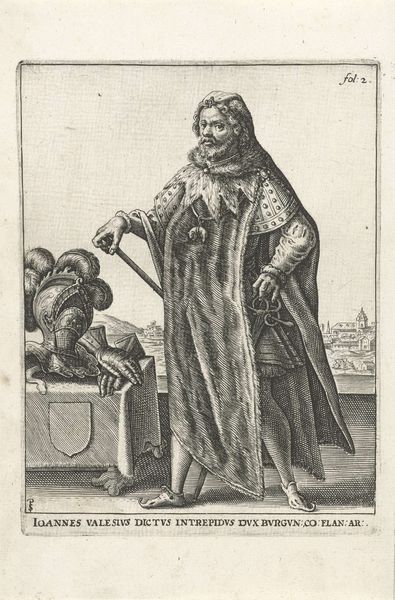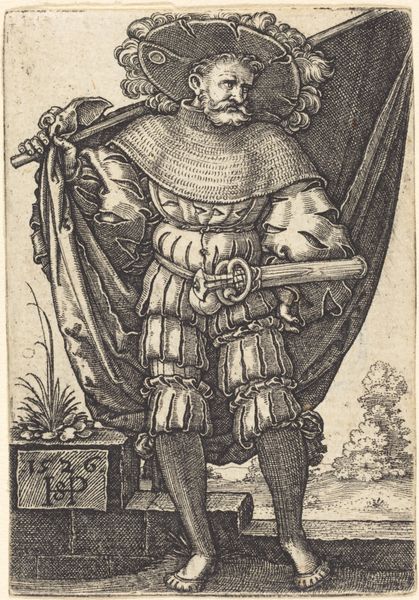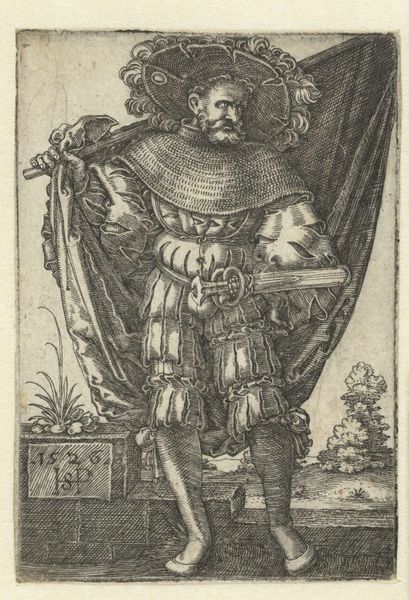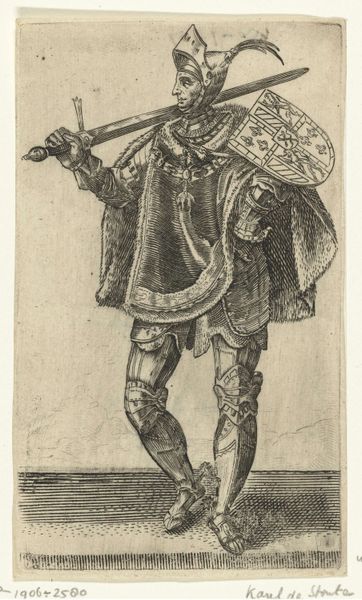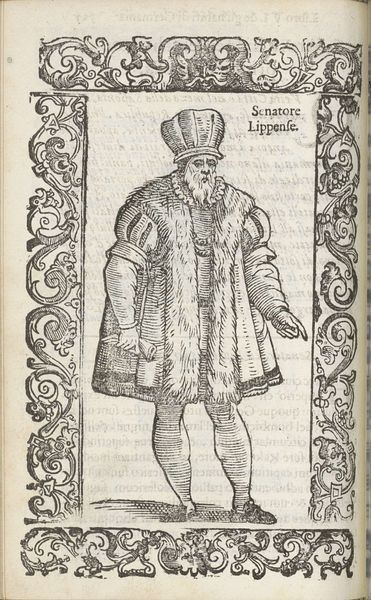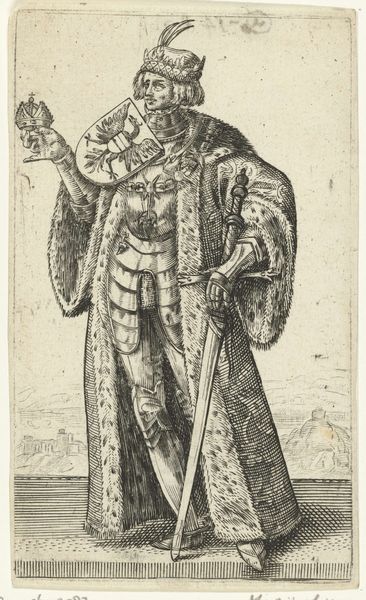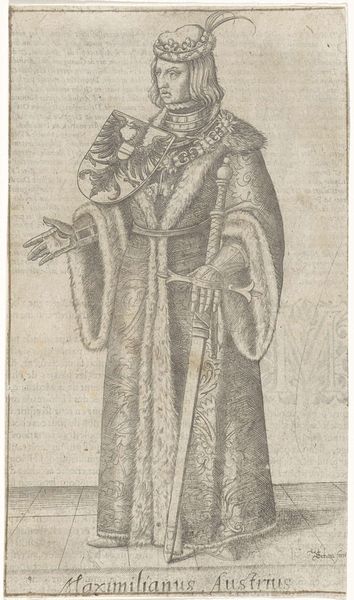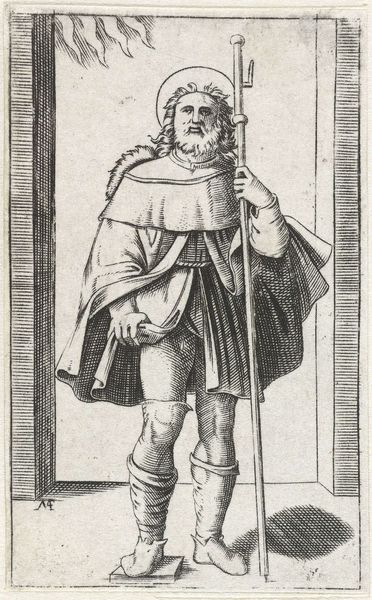
engraving
#
portrait
#
old engraving style
#
11_renaissance
#
history-painting
#
northern-renaissance
#
engraving
Dimensions: height 155 mm, width 119 mm
Copyright: Rijks Museum: Open Domain
This engraving, made around the turn of the 17th century by Wierix, shows the painter Hieronymus Cock holding a skull. Look closely, and you can see how the graphic quality of the image is achieved. The artist has used a technique called 'hatching', building up tone by layering tiny parallel lines. The image is relatively small, and was made using an engraver's burin, a handheld steel tool. The burin is pushed through a copper plate, incising lines into its surface. The plate is then inked, and the surface wiped clean, leaving ink only in the engraved lines. It's then pressed onto paper, transferring the image. It was a painstaking process, demanding great dexterity and control. Engravings like this were made in multiples, allowing images to be widely disseminated. In this case, the print serves as a kind of calling card, memorializing Cock's artistry and legacy. It's a reminder that even seemingly 'flat' images have a complex material history.
Comments
No comments
Be the first to comment and join the conversation on the ultimate creative platform.
